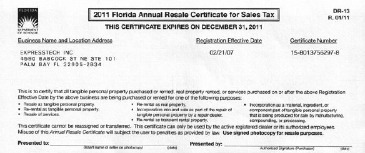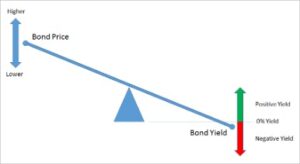Content
If the U.S. trustee or bankruptcy administrator schedules the meeting at a place that does not have regular U.S. trustee or bankruptcy administrator staffing, the meeting may be held no more than 60 days after the debtor files. During this meeting, the trustee places the debtor under oath, and both the trustee and creditors may ask questions. The debtor must attend the meeting and answer questions regarding his or her financial affairs and the proposed terms of the plan.11 U.S.C. § 343. If a husband and wife file a joint petition, they both must attend the creditors’ meeting and answer questions.
- (2) Capital expenditures for special purpose equipment are allowable as direct costs, provided that items with a unit cost of $5,000 or more have the prior written approval of the Federal awarding agency or pass-through entity.
- The same issue exists for dividing lump sums across several periods, such as depreciating fixed assets and amortizing prepaid expenses.
- A taxpayer that makes more than one method change under section 16.12(2)(a)(iii)(E) of this revenue procedure for the same year of change must provide a single net § 481(a) adjustment for all such changes.
- This may be described in appointment letters or other documentations.
- Go to TaxpayerAdvocate.IRS.gov to help you understand what these rights mean to you and how they apply.
- If a set of financial statements cover the results of an entire year, then the accounting period is one year.
During the days after the month has ended, but the previous period is still open, documents that are eligible to post to the previous period will have a dropdown selection to post to either the previous period or the current period. The document must be finalized on the Fiscal Period Closing Date for it to post to the previous period. TAS can provide a variety of information for tax professionals, including tax law updates and guidance, TAS programs, and ways to let TAS know about systemic problems you’ve seen in your practice.
Exclusive Tax Planning Services! Maximize Your Savings Today!
Other times, the adjustments might have to be calculated for each period, and then your accountant will give you adjusting entries to make after the end of the accounting period. Let’s pause here for a moment for an explanation of what happened “behind the scenes” when you made your insurance payment on Dec. 17. When you entered the https://kelleysbookkeeping.com/ check into your accounting software, you debited Insurance Expense and credited your checking account. However, that debit — or increase to — your Insurance Expense account overstated the actual amount of your insurance premium on an accrual basis by $1,200. So, we make the adjusting entry to reduce your insurance expense by $1,200.

See section 16.12(7)(a) of this revenue procedure for more information on making concurrent changes. (2) The depreciation method used to charge the cost of an asset (or group of assets) to accounting periods must reflect the pattern of consumption of the asset during its useful life. In the absence of clear evidence indicating that the expected consumption of the asset will be significantly greater in the early portions than in the later portions of its useful life, the straight-line method must be presumed to be the appropriate method. Depreciation methods once used may not be changed unless approved in advance by the cognizant agency. The depreciation methods used to calculate the depreciation amounts for indirect (F&A) rate purposes must be the same methods used by the non-Federal entity for its financial statements.
IRS Issues Accounting Method Procedures for TCJA Changes
A corporation or partnership that fails to meet the gross receipts test for any tax year cannot use the cash method and must change to an accrual method of accounting, effective for the tax year in which the entity fails to meet this test. You must use a system that clearly reflects your income and expenses and you must maintain records that will enable you to file a correct return. In addition to your permanent accounting books, you must keep any other records necessary to support the entries on your books and tax returns. Each taxpayer must use a consistent accounting method, which is a set of rules for determining when to report income and expenses. The most commonly used accounting methods are the cash method and the accrual method. Every taxpayer (individuals, business entities, etc.) must figure taxable income for an annual accounting period called a tax year.
- Therefore, bot activity that doesn’t conform to BLS usage policy is prohibited.
- (5) Pension plan termination insurance premiums paid pursuant to the Employee Retirement Income Security Act (ERISA) of 1974 (29 U.S.C. 1301–1461) are allowable.
- A partnership must conform its tax year to its partners’ tax years unless any of the following apply.
- (3) The past pattern of such costs, particularly in the years prior to Federal awards.
- You can now file Form 1040-X electronically with tax filing software to amend 2019 or 2020 Forms 1040 and 1040-SR.
- However, if you have an applicable financial statement (AFS), you include the amount in income no later than when the item of income is reported in your applicable financial statement (AFS).
The company’s internal management needs to see financial reports more than once a year to be able to forecast future sales, expenses, and staffing accurately. Employees are usually interested in the company’s financial status because it can affect their job security. It means that the better the company performs, the more money they will build for retirement. Within 30 days after filing the bankruptcy case, even if the plan has not yet been approved by the court, the debtor must start making plan payments to the trustee.
Changing your tax year
If the request is denied, the back-up section 444 election must be activated (if the partnership, S corporation, or PSC otherwise qualifies). Form 8752, Required Payment or Refund Under Section 7519, must be filed each year the section 444 election is in effect, even if no payment is due. If the required payment is more than $500 (or the required payment for any prior year was more than $500), the payment must be made when Form 8752 is filed. If the required payment is $500 or less and no payment was required in a prior year, Form 8752 must be filed showing a zero amount. E wants to make a section 444 election to adopt a September 30 tax year. E’s deferral period for the tax year beginning December 1 is 3 months, the number of months between September 30 and December 31.
An inventory is necessary to clearly show income when the production, purchase, or sale of merchandise is an income-producing factor. If you must account for an inventory in your business, you must use an accrual method of accounting for your purchases and sales. An exception to the economic performance rule allows certain recurring items to be treated as incurred during the tax year even though economic performance has not occurred.
4–5 calendar
Costs incurred for intramural activities, student publications, student clubs, and other student activities, are unallowable, unless specifically provided for in the Federal award. For costs to be allowable, the nonprofit organization incurred the interest costs after September 29, 1995, in connection with acquisitions of capital assets that occurred after that date. (B) To compute monthly cash inflows and outflows, the non-Federal entity must divide the annual amounts determined in step (i) by the number of months in the year (usually 12) that the building is in service.
- Except as noted in paragraph (h)(1)(ii) of this section, in no event will charges to Federal awards, irrespective of the basis of computation, exceed the proportionate share of the IBS for that period.
- To determine whether an item is recurring and consistently reported, consider the frequency with which the item and similar items are incurred (or expected to be incurred) and how you report these items for tax purposes.
- Find the right balance between demand and supply across your entire organization with the demand planning and distribution requirements planning features.
(3) Closing costs, such as brokerage, legal, and appraisal fees, incident to the disposition of the employee’s former home. These costs, together with those described in (4), are limited to 8 per cent of the sales price of the employee’s former home. (4) Meet the definition of “direct cost” as described in the applicable cost principles. (c) In addition to the factors in paragraph (b) of this section, to be allowable, retainer fees must be supported by evidence of bona fide services available or rendered.
However, certain corporations (other than S corporations) and partnerships that have a partner that is a corporation must use an accrual method for their farming business, unless they meet the gross receipts test discussed above. You are a calendar year taxpayer and pay $10,000 on July 1, 2021, for a business insurance policy that is effective for only 1 year beginning on July 1, 2021. If you have not been applying the general rule (an expense paid in advance is deductible only in the year to which it applies) and/or the 12-month rule to the expenses you paid in advance, you must obtain approval from the IRS before using the general rule and/or the 12-month rule. Generally, you can use any combination of cash, accrual, and special methods of accounting if the combination clearly reflects your income and you use it consistently.
In no case may a plan provide for payments over a period longer than five years. During this time the law forbids creditors from starting or continuing collection efforts. From July through December 2021, advance payments were sent automatically to taxpayers with qualifying children who met certain criteria. The advance child tax credit payments were early payments of up to 50% of the estimated child tax credit that taxpayers may properly claim on their 2021 returns.
Search Form
The cost of training and education provided for employee development is allowable. (5) It is the IHE’s practice to similarly compensate students under Federal awards as well as other activities. (3) Continuing mortgage principal and interest payments on a home being sold. (1) The costs of transportation of the employee, members of his or her immediate family and his household, and personal effects to the new location.

Adjusting entries usually involve one or more balance sheet accounts and one or more accounts from your profit and loss statement. In other words, when you make an adjusting entry to your books, you are adjusting your income or expenses and either Purpose & Perks Of Your Business Having 13 Accounting Periods what your company owns (assets) or what it owes (liabilities). The verb “inventory” refers to the act of counting or listing items. As an accounting term, inventory is a current asset and refers to all stock in the various production stages.
